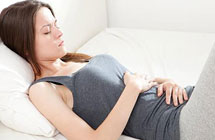研究:针灸能缓解痛经
|
女性朋友们经常受到痛经的困扰。国外一项最新研究表明,针灸能够明显缓解痛经及与之相伴的头痛等症状,还能改善经前期综合征。 Researchers in Australia and New Zealand have found that acupuncture can significantly reduce the severity and duration of period pain. The study conducted by Australian and New Zealand researchers also found it relieved associated headaches and nausea.
'Our pilot study found that using manual stimulation of the needles, rather than an electrical pulse, commonly used in many Chinese studies for period pain, resulted in reduced need for pain-relieving medication and improvement in secondary symptoms such as headaches and nausea,' said Dr Mike Armour. 'The latter was unexpected and will be explored further in future, larger trials.' Dr Armour is a postdoctoral research fellow at Western Sydney University's National Institute of Complementary Medicine. It was a small pilot study of 74 women aged between 18 and 45 which found that more than half had at least a 50 percent reduction in the severity of their period pain after undergoing acupuncture treatment. The women underwent the treatment for three months, with the effects lasting for up to a year. Many of the women also reported less of a need to use painkillers to treat their period pain and an improvement in secondary symptoms. This included headaches and nausea, according to the study published in the international journal PLOS One. Known in medical circles as primary dysmenorrhea, period pain is most common in women aged under 25. It is also the most common gynaecological problem among women generally, with four in five encountering it during their reproductive years. The researchers from Western Sydney University and the University of Auckland also found that manual acupuncture, where thin needles are inserted at certain points on the body, provided more relief than electro-acupuncture, which involves a small electrical current passing through the needles. During the study, the women kept a diary and underwent one of four types of manual or electro acupuncture treatments. Twelve treatments were carried out either once or three times a week over three menstrual cycles. The women reported significant reductions in 'peak pain' during the first three days of their period and in "average pain" experienced over their entire period, with the effects sustained for 12 months. Many also experienced improvements in PMS-related symptoms such as mood swings. 'Treatment timing appears to play a small role, with high frequency of treatment providing greater improvements in health-related quality of life,' the researchers wrote. |









